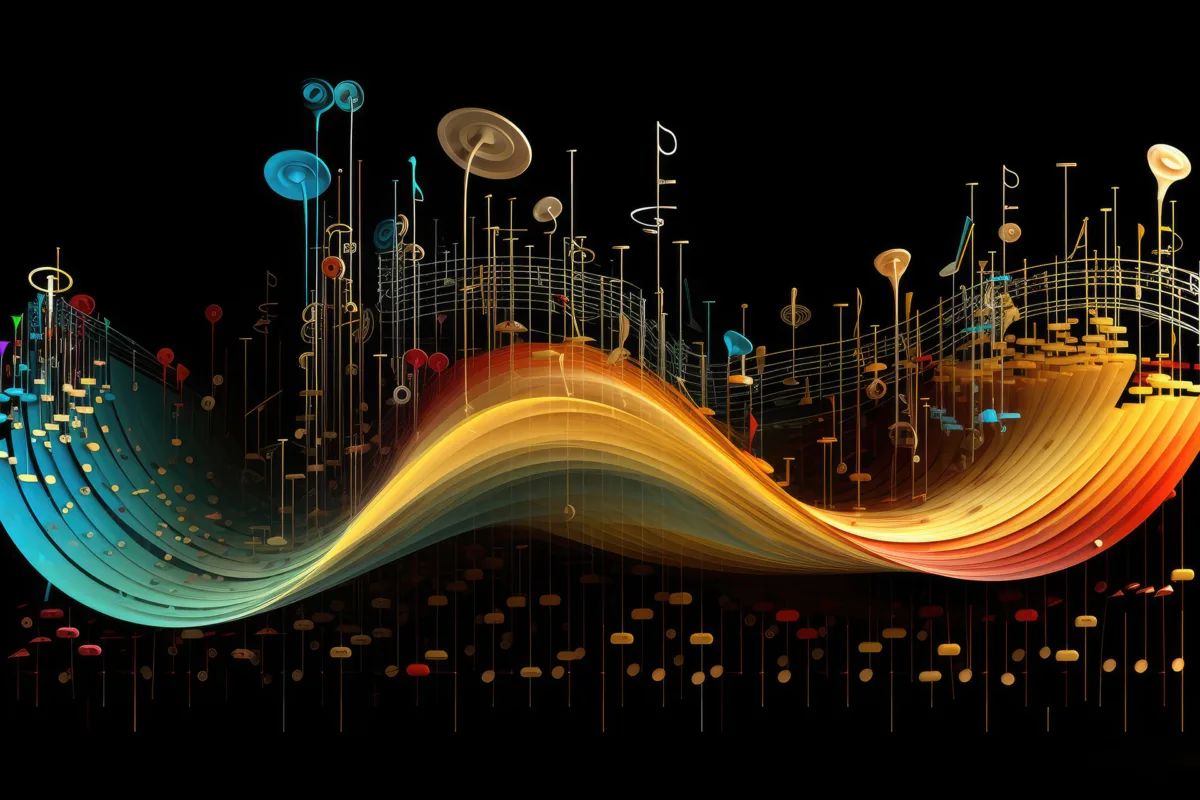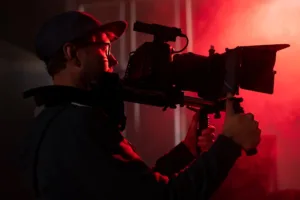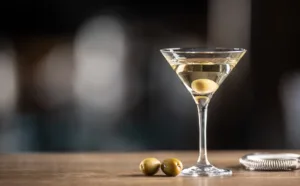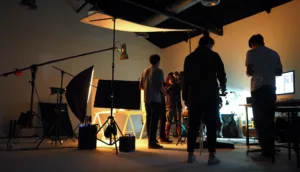A Beginners Guide To Understanding Public Domain Music.
Public Domain Music Unraveled
Music rights can feel like a maze, right? Luckily, public domain music is here to save the day. It’s like a free buffet of songs you can use however you want—no strings attached! But how do you know if a song’s in the public domain, and where do you find it?
This guide breaks it all down. We’ll show you how to spot public domain music, where to grab it, and how to use it in your content without worries. Let’s get you set up with some killer, copyright-free tunes!
What is Public Domain Music?
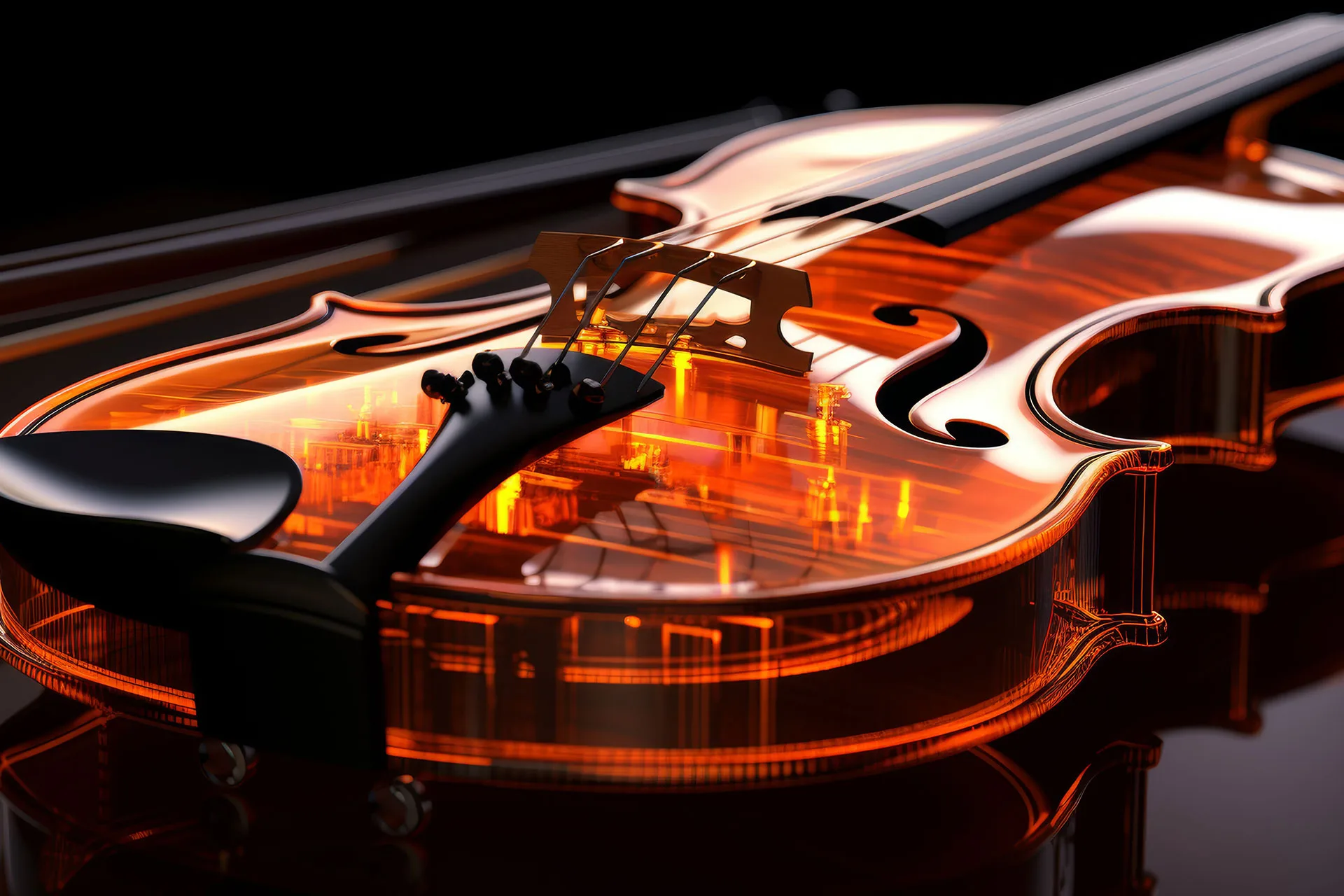
What You Need To Know
Public domain music is like a music library without a lock! It’s free for anyone to use, remix, and share without needing permission or paying royalties. But how does a song actually get into the public domain? And how is it different from other copyright-free options?
Typically, music lands in the public domain once its copyright expires—which usually happens about 70 years after the original artist’s death. In the U.S., for example, anything published before 1924 is now fair game. Some music, like traditional folk tunes, also never had copyright protection in the first place, making it free for all from the start.
There’s also a rare, heroic route: copyright abandonment. Occasionally, artists or copyright holders will generously release their works to the public domain—no strings attached. One fun example? Comedian Tom Lehrer released his entire catalog for anyone to use however they please.
Why It’s Awesome for Content Creators
For creators, public domain music is like a backstage pass to creative freedom. You can use these songs however you like—edit them, remix them, or even sell your own version if you’re feeling ambitious. And the best part? No copyright headaches or royalties to worry about.
So, what exactly qualifies as public domain? And where can you find these gems? Up next, we’ll cover how to be sure a song’s actually in the public domain—and where to find your next hit.
How Does Music Qualify for Public Domain?
So, how does a song make it into the public domain? It’s a mix of age, law, and sometimes a little generosity. Here’s the scoop.
Age and Expiration
Most music qualifies for the public domain simply by getting older. Copyrights aren’t forever—they’re more like a lengthy guest pass. In many places, music copyright lasts for the life of the composer plus 70 years. Once that time’s up, the copyright expires, and the song moves into the public domain. In the U.S., that means anything published before 1924 is now up for grabs!
Some Songs Start in the Public Domain
Certain music never had a copyright to begin with. Think of classic folk tunes or very old pieces from before copyright laws were even a thing. Songs like “Greensleeves” and many traditional lullabies were never under copyright and have always been public domain.
The “Generous Artist” Route
Sometimes, artists decide to fast-track their work into the public domain. This isn’t super common, but it happens! Artists or rights holders can waive all copyright protections, basically saying, “Go ahead, world, this one’s on me.” For instance, Tom Lehrer, the satirical songwriter, released all his works to the public domain, giving anyone permission to use them however they want.
These paths—age, uncopyrighted origins, or a copyright waiver—are the main ways music ends up in the public domain. Knowing this can help you avoid the “Is this legal?” worry when using older tunes in your projects.
In the next section, we’ll get into exactly how to verify if a song is truly public domain—and where to find it online.
How to Identify Public Domain Music
Now that you know how music ends up in the public domain, let’s talk about finding it. Not every old song is public domain, and not every free track is, either! Here’s how to confidently check if a song is fair game.
Use Trusted Public Domain Resources
The internet’s full of resources to help you sort public domain gems from copyrighted tunes. Some solid options to start with:
- Project Gutenberg – Primarily for books, but it has a few music resources.
- Musopen – A goldmine for classical sheet music and recordings that are in the public domain.
- Internet Archive – A huge collection of old music files, many of which are public domain and ready for download.
Check for Copyright Dates
One quick way to check if a song is public domain is to look at its publication date. In the U.S., anything published before 1924 is in the public domain. For anything after that, the song might still be under copyright. If you’re looking for public domain music that’s guaranteed safe, sticking to pre-1924 tunes is a safe bet.
Watch Out for Modern Recordings
Here’s a little twist: even if the song itself is in the public domain, a recording of it might not be. For example, Beethoven’s “Symphony No. 5” is definitely public domain. But if you’re using a recording made by an orchestra in 2020, that specific recording might be copyrighted. In other words, you’re free to use old sheet music or make your own recording—but be careful with recent performances.
When in Doubt, Use a Public Domain Verification Tool
Some websites offer tools or databases to help you double-check a song’s status. The U.S. Copyright Office, for example, has a searchable catalog. While it’s mostly for American works, it’s a helpful resource if you’re trying to be extra sure.
These steps will help you find and verify public domain music so you can use it in your projects worry-free. In the next section, we’ll dive into how you can use public domain music creatively—and legally!
Can You Use Public Domain Music Freely? Absolutely—But There Are Some Tips!
The beauty of public domain music is that it’s free for anyone to use however they want. Want to remix a classical piece? Go for it. Use a classic tune as the soundtrack to your video? No problem. But, as always, there are a few things to keep in mind to make sure you’re fully in the clear.
No Permissions Needed, But Choose Wisely
Once a song is in the public domain, you don’t need to ask anyone’s permission or pay royalties. That said, not every public domain track is going to fit your needs, especially if you’re looking for something high-quality or unique. Public domain music is often older (think classical music or traditional folk tunes), so make sure the vibe matches your project!
Free to Use… But Watch for Copyrighted Recordings
Just because a song itself is public domain doesn’t mean every version of it is free to use. Recordings are a separate deal. A song like “Amazing Grace” might be public domain, but a recent recording of it by a specific artist or band might still be copyrighted. So if you want to use a specific recording, make sure it’s also public domain, or go for an older or openly licensed version.
Get Creative! Remix, Sample, and Even Sell
Here’s the real freedom with public domain music: you can take it, sample it, remix it, and even sell your own creation. Want to add some beats to a Mozart piece and use it in your video? That’s completely allowed. You can also use public domain music as background for paid projects or commercials without needing special permission.
The One Caveat: Double-Check Country-Specific Rules
Different countries have slightly different rules for what qualifies as public domain, especially when it comes to copyright duration. If you’re creating content for an international audience or working with collaborators in different countries, it’s smart to check that the music you’re using qualifies as public domain in their region, too.
With these tips, you’re all set to use public-domain music freely and creatively! Next, we’ll explore some popular songs you probably didn’t realize were in the public domain. Who knows—your new favorite track might be a century-old classic!
Popular Songs You Didn’t Know Were in the Public Domain
Ready to dig into some public domain classics? You might be surprised by how many familiar tunes are out there, just waiting to be used. From timeless folk songs to iconic classical pieces, these tracks are free for you to remix, sample, or simply enjoy as-is.
Classic Hits in the Public Domain
Some of the most well-known tunes have aged their way into the public domain. Here are a few that are yours to use, royalty-free:
- “Happy Birthday” – Yep, after years of copyright battles, “Happy Birthday” was officially ruled public domain in 2016, which means no more licensing fees for singing it in videos.
- “The Entertainer” by Scott Joplin – This iconic ragtime piece is instantly recognizable and perfect for adding a bit of classic charm to your content.
- “Greensleeves” – This hauntingly beautiful folk song is a free-for-all now, so whether you want it in the background of a medieval-themed video or a modern remix, it’s fair game.
Classical Favorites Up for Grabs
Classical music is a treasure trove of public domain options. Think Beethoven, Mozart, and Bach—most of their music is free to use and adds instant sophistication to any project. A few pieces you’ll likely recognize:
- Beethoven’s “Symphony No. 5” – That dramatic “dun-dun-dun-DUN!” opening? 100% public domain.
- Mozart’s “Eine kleine Nachtmusik” – Perfect for light, lively scenes, this classic is a staple in public domain music.
- Bach’s “Toccata and Fugue in D Minor” – The eerie, intense organ piece is a Halloween classic and totally free to use in your content.
Keep an Eye on What’s Coming Up
Each year, new works enter the public domain. For example, music published in 1924 entered the public domain in 2020, and in 2025, any works from 1929 will be joining the list. Keeping track of these releases can expand your music library with fresh (or vintage!) tunes each January.
Exploring these songs is a great way to add unique, recognizable music to your content without dealing with copyright. So go ahead, add some Mozart to your podcast or jazz up your next video with Scott Joplin. In the next section, we’ll cover what to do if the song you want isn’t quite public domain yet and you still want to use it.
What to Do If a Song Isn’t in the Public Domain Yet
Found the perfect song, but it’s still copyrighted? Don’t worry—you’ve got options! While public domain music gives you full freedom, there are ways to legally use copyrighted tracks if you’re willing to jump through a few hoops.
Get Permission or a License
The first route is to ask for permission. This usually means contacting the copyright holder (often the record label or a music licensing organization) and getting a license. Depending on your project, you might need a specific type of license:
- Synchronization License – If you’re using the music with video (like in a YouTube video or film), you’ll need a “sync” license.
- Mechanical License – For reproducing a song, like recording a cover or distributing it digitally.
- Public Performance License – For playing music publicly, like at events or in a live-streamed setting.
These licenses usually come with a fee, which can range from affordable to… let’s just say, “not cheap.” But if you’re set on using a copyrighted track, it’s the safest way to go.
Look for Royalty-Free Alternatives
If getting a license sounds like a hassle (or is out of budget), consider royalty-free music. Royalty-free tracks let you pay once to use the music as much as you want. Sites like Artlist, Epidemic Sound, and AudioJungle offer high-quality royalty-free music that covers every genre and mood. You won’t have as much creative freedom as with public-domain music, but it’s a lot easier than managing licensing for each use.
Consider Sampling or Remixing Public Domain Music
Another cool option? Sample or remix a public domain track! You can take a public domain classic and add your own spin to it—no permissions needed. This can give you a unique sound that’s all yours without any licensing stress. Think of it as creating something fresh from a timeless piece.
Reach Out to Independent Artists
Finally, don’t overlook indie artists! Many independent musicians are open to collaborations and may grant permission for a much lower fee (or even free) if you’re both interested in a creative partnership. Just make sure you get everything in writing.
So, while public domain tracks are the ultimate hassle-free option, licensed music and royalty-free alternatives can give you access to today’s hits if you need them. Up next, we’ll dive into whether you can sell or sample public domain music and the fun ways you can make it your own!
Can You Sell or Sample Public Domain Music? Yes, and Here’s How!
One of the coolest things about public domain music? You can remix it, sample it, or even sell your own version. There are zero restrictions—so you’re free to get as creative as you want.
Yes, You Can Sell It
When a song is in the public domain, you’re allowed to make money from it. This means you can create your own version, whether it’s a remix, cover, or instrumental interpretation, and sell it on music platforms. Since the original song has no copyright restrictions, you’re free to monetize your rendition however you like.
Sampling Public Domain Music
Sampling public domain music is also completely legal. You can take a part of a classical piece, a famous folk tune, or any other public domain track and mix it into your own work. Unlike copyrighted music, you don’t need permission or a license to use public domain samples. So, if you’ve ever dreamed of adding a Beethoven riff to your hip-hop beat, you’re in the clear.
Make It Yours with Modern Flair
One popular approach? Adding a modern twist to public domain music. Lots of artists and content creators use this technique to breathe new life into older works. Take a public domain melody, add some electronic beats, or speed up the tempo—it’s a great way to make something old feel brand new. Plus, it can give your content a unique, standout sound.
Creating Derivative Works
Public domain music also allows for creating derivative works. This means you can rearrange the music, change the lyrics (if there are any), or adapt it to a different style altogether. These new versions can then be copyrighted under your name, so if someone wants to use your remix, they’ll need to get permission from you.
With public domain music, the possibilities are almost endless, and it’s a fantastic way to create original, monetizable content without dealing with copyright barriers. In the final section, we’ll wrap things up with a quick FAQ to help answer any remaining questions you might have about public domain music.
Frequently Asked Questions About Public Domain Music
Got questions? Let’s clear up some of the finer details about using public domain music. Here are answers to the most common questions creators ask.
How do I know if a song is public domain?
A good rule of thumb: in the U.S., any song published before 1924 is public domain. If it’s after that, check resources like the U.S. Copyright Office or public domain sites like Musopen and Internet Archive to confirm. Just remember, even if a song is public domain, newer recordings of it may still be copyrighted.
Can I use public domain music for commercial projects?
Absolutely! Public domain music can be used in any type of project—commercial, personal, or educational—without needing permission. This makes it a fantastic option for ads, YouTube videos, podcasts, and more.
Is public domain music the same as royalty-free music?
Not quite. Public domain music has no copyright restrictions at all, so it’s totally free to use however you want. Royalty-free music, on the other hand, usually requires a one-time fee or subscription, after which you can use the track under certain conditions. They’re both useful, but public domain music offers more freedom.
Do all songs eventually enter the public domain?
Pretty much! Copyright doesn’t last forever. In the U.S., songs will enter the public domain once the copyright period expires, which is usually 70 years after the composer’s death. So, every January, new songs get added to the public domain list, giving creators fresh, free options.
Can I copyright my version of a public domain song?
Yes! If you create a unique arrangement, remix, or recording of a public domain song, that version can be copyrighted as your own work. But keep in mind, only your specific version is protected; the original song will still be public domain.
Where can I find good public domain music?
Start with trusted sites like Musopen, Free Music Archive, and TuneCutter. These sites focus on public domain and royalty-free music, so you’ll find a huge range of tunes without worrying about copyright.
Hopefully, these answers clear up any remaining questions about public domain music. With this guide, you’re ready to start finding, using, and creating with public domain tracks in a way that’s both legal and fun. So go ahead—dive into the world of copyright-free music, and make something amazing!
Wrapping It Up: Key Takeaways on Public Domain Music
Using public-domain music is like unlocking a library of creative possibilities—all without the copyright headaches. Let’s recap the essentials so you’re ready to start creating with confidence.
- Public domain music is free for everyone: Once a song’s copyright expires, it’s fair game. You can use, remix, or even sell your own versions of it without needing permission or paying royalties.
- Check the publication date: For most music, anything published before 1924 in the U.S. is public domain. After that, use tools like the U.S. Copyright Office catalog or public domain sites to double-check its status.
- Be cautious with recordings: Even if a song itself is public domain, newer recordings of it might still be copyrighted. Stick to public domain recordings or make your own if you want full freedom.
- Endless ways to use it: With public domain music, you’re free to sample, remix, and incorporate these tracks into commercial projects, ads, podcasts, or even sell your own adaptations.
- New works enter every year: Every January, new music joins the public domain. Stay updated, and you’ll have a fresh batch of copyright-free tunes to add to your projects.
Public domain music is a powerful tool for content creators who want flexibility and creativity without legal red tape. So dive in, explore those timeless tracks, and start crafting something original. The world of public domain music is open to you—time to make it your own!



